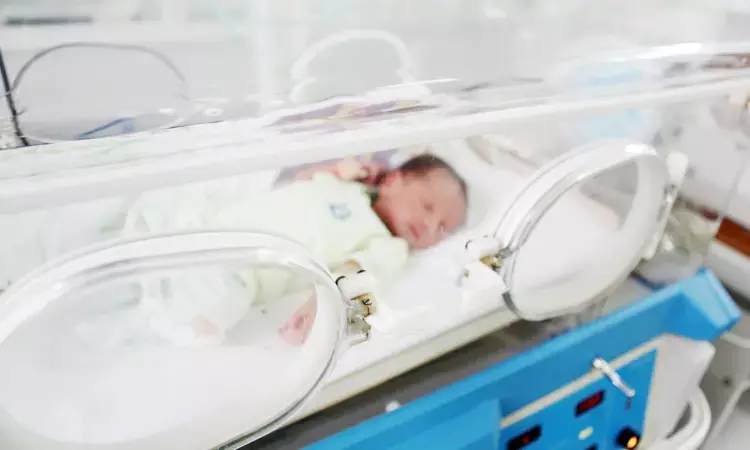- Home
- Medical news & Guidelines
- Anesthesiology
- Cardiology and CTVS
- Critical Care
- Dentistry
- Dermatology
- Diabetes and Endocrinology
- ENT
- Gastroenterology
- Medicine
- Nephrology
- Neurology
- Obstretics-Gynaecology
- Oncology
- Ophthalmology
- Orthopaedics
- Pediatrics-Neonatology
- Psychiatry
- Pulmonology
- Radiology
- Surgery
- Urology
- Laboratory Medicine
- Diet
- Nursing
- Paramedical
- Physiotherapy
- Health news
- Fact Check
- Bone Health Fact Check
- Brain Health Fact Check
- Cancer Related Fact Check
- Child Care Fact Check
- Dental and oral health fact check
- Diabetes and metabolic health fact check
- Diet and Nutrition Fact Check
- Eye and ENT Care Fact Check
- Fitness fact check
- Gut health fact check
- Heart health fact check
- Kidney health fact check
- Medical education fact check
- Men's health fact check
- Respiratory fact check
- Skin and hair care fact check
- Vaccine and Immunization fact check
- Women's health fact check
- AYUSH
- State News
- Andaman and Nicobar Islands
- Andhra Pradesh
- Arunachal Pradesh
- Assam
- Bihar
- Chandigarh
- Chattisgarh
- Dadra and Nagar Haveli
- Daman and Diu
- Delhi
- Goa
- Gujarat
- Haryana
- Himachal Pradesh
- Jammu & Kashmir
- Jharkhand
- Karnataka
- Kerala
- Ladakh
- Lakshadweep
- Madhya Pradesh
- Maharashtra
- Manipur
- Meghalaya
- Mizoram
- Nagaland
- Odisha
- Puducherry
- Punjab
- Rajasthan
- Sikkim
- Tamil Nadu
- Telangana
- Tripura
- Uttar Pradesh
- Uttrakhand
- West Bengal
- Medical Education
- Industry
Postnatal corticosteroid treatment more effective in neonates born to mothers with placental injury

Netherland: A recent study published in the European Journal of Pediatrics has concluded that Neonates born after maternal vascular malperfusion (placental injury) show a better response to postnatal corticosteroid treatment.
Preterm infants <29 weeks gestational age are at high risk for death and disability. Bronchopulmonary dysplasia (BPD), a common chronic respiratory morbidity in surviving preterm infants, has an incidence of ~45%. The risk factors for BPD include intrauterine growth restriction, lack of antenatal steroids, chorioamnionitis, prolongation of mechanical ventilation, supplemental oxygen, and sepsis.
Children with BPD suffer from cardiopulmonary impairments, growth failure, hearing and vision deficits, delayed neurodevelopment, post-neonatal mortality, cerebral palsy, abnormalities in cognition, etc.
There is conflicting evidence of an association between placental pathology and neonatal outcomes. The studies have mentioned the association between placental pathology (single) and neonatal outcomes like acute histologic chorioamnionitis (AHC) and BPD, maternal vascular under perfusion (MVU) and BPD, etc.
Postnatal corticosteroids are given to preterm neonates for the prevention of bronchopulmonary dysplasia. Non-responders are those neonates who do not respond to corticosteroids.
Considering this, a study led by V. M. Koenders from the Isala Hospital Neonatal Intensive Care Unit to investigate "What is the association between placental pathology and short-term response to corticosteroids in neonates < 32 weeks postconceptional age at risk for bronchopulmonary dysplasia?"
The critical points of the study are:
• The study included neonates < 32 weeks who were born between 2009 – 2016 and were on corticosteroid therapy during BPD.
• Based on the placental histology, the preterm neonates were divided into three groups.
• The three groups were acute chorioamnionitis, maternal vascular malperfusion, and no placental pathology.
• The respiratory support assessment was done before treatment and on day four and day 7.
• After starting corticosteroid treatment, the responder was determined by extubation within seven days.
• The total responders in the chorioamnionitis neonates, maternal vascular malperfusion neonates, and no pathology were 52%, 67%, and 58%.
• On days 4 and 7, extubation had odds ratios of 0.53 and 0.66 in the chorioamnionitis group compared to the maternal vascular malperfusion.
The co-researcher, A. Appels from the Isala Hospital at Neonatal Intensive Care Unit, wrote there was no significant difference in Short-term response to postnatal corticosteroids between premature neonates born after acute chorioamnionitis, maternal vascular malperfusion, or no placenta pathology.
The researchers added a better trend of corticosteroid response is found in maternal vascular malperfusion neonates. This may be due to differences in prenatal pulmonary development and postnatal cortisol.
The team explained BD is related to chorioamnionitis and maternal vascular malperfusion. Corticosteroids are the primary treatment modality. Some preterm neonates respond to it, while some do not (non-responders). This non-responsiveness is related to the difference in pulmonary inflammation and systemic cortisol. Triggered predispositions further explain this due to chorioamnionitis and maternal vascular imperfusion.
Further reading:
Koenders, V.M., Appels, A., van Straaten, H.L.M. et al. Postnatal corticosteroid response in neonates < 32 weeks and relation with placental pathology. Eur J Pediatr (2022). https://doi.org/10.1007/s00431-022-04672-9
BDS, MDS in Periodontics and Implantology
Dr. Aditi Yadav is a BDS, MDS in Periodontics and Implantology. She has a clinical experience of 5 years as a laser dental surgeon. She also has a Diploma in clinical research and pharmacovigilance and is a Certified data scientist. She is currently working as a content developer in e-health services. Dr. Yadav has a keen interest in Medical Journalism and is actively involved in Medical Research writing.
Dr Kamal Kant Kohli-MBBS, DTCD- a chest specialist with more than 30 years of practice and a flair for writing clinical articles, Dr Kamal Kant Kohli joined Medical Dialogues as a Chief Editor of Medical News. Besides writing articles, as an editor, he proofreads and verifies all the medical content published on Medical Dialogues including those coming from journals, studies,medical conferences,guidelines etc. Email: drkohli@medicaldialogues.in. Contact no. 011-43720751


